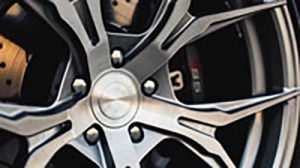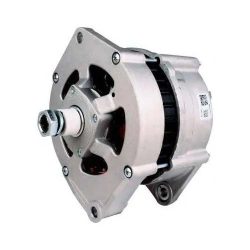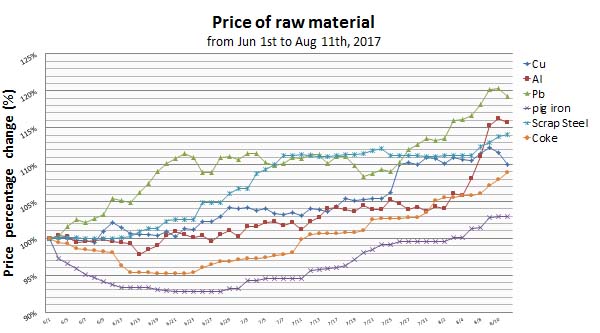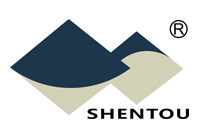CHINA AUTOMOTIVE SUPPLIER QUALITY MANAGEMENT BRIEFING
08/05/2017
Vol. 1, No. 6, August 2017

① QUALITY CHALLENGES & SOLUTIONS WITH YOUR SUPPLIERS IN CHINA

For long-term international buyers in China, many suppliers’ qualities are generally stable in the early stage of cooperation. However, some unacceptable and sometimes batch-related quality issues may suddenly occur later (sometimes even several years down the road) from the same suppliers. This puts the buyers in a tough situation: should they keep purchasing from the same supplier or find a new one?
When initially purchasing in China, international buyers are usually cautious about choosing quality suppliers, and suppliers are also very serious about their product quality. After some time, especially when there are very few quality issues with their deliveries, the buyers will ease up on their control of the supplier quality system and product quality. However, this will almost always lead to inexplicable and unavoidable issues.
Such phenomena generally occur amongst Chinese automotive aftermarket producers who focus on product development and production for overseas aftermarkets only. These suppliers have ISO9001 certifications, and some have even managed to become TS16949 certified. Nonetheless, their internal quality management systems are weak.
While there are many direct causes of the aforementioned quality issues, from a quality assurance standpoint with regards to a sound quality management system, one of the fundamental and root problems is the lack of requirements on process and product audit plan and implementation.
Specifically,
In the early stages of cooperation, the production resources for the customers are relatively stable; for example, there are no significant changes in man, machine, material, method and environment within a certain period of time, which results in stable product quality.
Yet as suppliers continue to grow and expand, more, and sometimes major, changes take place within the production resources, which gradually brings potential risks to the initially stable product quality:
●Changes in quality-related personnel;
●Upgrades and adjustments in production and testing equipment;
●Replacements of and adjustments in production process;
●Changes inside or outside the organizations’ environment
However, most aftermarket suppliers never undertake any regular process and product audits as well as the follow-up corrections and validations when the production resources associated with the original process and products for the customers have changed.
How should one deal with these challenges?
When international buyers keep purchasing regularly from relatively long-term aftermarket suppliers:
●Ask the suppliers to establish and implement systems and plans of internal process and product audits;
●Arrange regular inspections and audits based on the suppliers’ different processes and product special characteristics with second or third-party audits;
●Undertake timely rectifications and verifications on nonconformities discovered during the audits.
By Felix SS YUAN
② CRITICAL FAILURE MODES / QUALITY CONTROL POINTS IN FOCUS
Alternator

Primary failure modes:
●Rectifier failure: Insufficient power generation, no DC output, serious over-heating
Main causes: The diode power is not enough or the diode is damaged from breakdown.
●Regulator failure: Battery damage
Main causes: Regulator does not match alternator; incorrect internal structure of the regulator.
●Stator failure: Short circuit, open circuit
Main causes: Incoming raw material inspection out of control, unreasonable parameter control of core processes such as winding, varnishing, etc.
●Rotor failure: Field coil and claw pole short circuit, false welding, incorrect upper and lower claw pole positions
Main causes: Unreasonable parameter control of the welding, dipping and assembly processes
Key preventative actions:
●At most alternator manufacturers, the front and rear end brackets, rectifiers, regulators, bearings and some other components are generally outsourced; however these are critical components of the alternators and usually require quality parts from well-known suppliers in order to reduce the alternator’s failure probability.
●Most of the alternator factories make stators and rotors in-house; therefore processes such as welding, varnishing, machining should be optimized and controlled.
By Patrick H. HAN
③ KEY CONCEPTS & PRACTICES IN SUPPLIER QUALITY MANAGEMENT
How to deal with the potential risks of product quality in herent with different production processes (Part II) ?
For impact on product surface quality with plating and polishing processes:
●Define defects caused by the previous process
●Definethe various possible defects from polishing
●Define the acceptable range and improvement of surface defects
For impact on product quality with automated processing:
●Understand the processing performance of each machine (machining precision, stability, etc.)
●Define specifications and frequency of inspections
For impact on product quality with assembly process:
●Check the rationality of product assembly process route
●Determine standards and test frequency of product inspections
●For new products, use failure mode and effect analysis (FMEA) to determine the potential failure mode and its causes
④ CHINA INDUSTRY & MARKET UPDATE
Cost of raw materials:

Add Your Heading Text Here
![]() USD/RMB: 1: 6.71
USD/RMB: 1: 6.71
![]() EUR/RMB: 1:7.94
EUR/RMB: 1:7.94
![]() RUB/RMB: 1:0.11
RUB/RMB: 1:0.11
August 2017
The above information is for reference only
The past couple of months were witness to some startling developments in the Chinese manufacturing industries: namely, the significant increase of raw materials almost across the board and the sharp appreciation of the Chinese yuan.
As seen in the above chart, from June to early August, the prices of copper, aluminum, lead, pig iron, scrap steel, and coal have been rising continuously, with the prices of scrap steel, copper and lead increasing more than 10%. The cost of pig iron has also increased almost 13% over the past six months.
Meanwhile, the Chinese yuan has appreciated considerably. In early 2017, the exchange rate between the USD and CNY was approximately 1:6.95, now it is about 1:6.70, an appreciation of almost 4%.
Although both the cost of raw materials and the exchange rates change constantly, the trend in the past several months is alarming. There have already been steep and sometimes successive upward price adjustments by many automotive suppliers in China, and it seems the trend will continue.
⑤ IT HELPS TO KNOW...

Auto Aftermarket Guangzhou (AAG) 2017
Date: Sep 4 – 6, 2017
Venue: Poly World Trade Center Expo, Guangzhou, China.
Organizer: China National Machinery Industry Corporation
Product focus: Parts & Components, Repair & Maintenance, Tyres & Service, Accessories & Tuning
With total exhibition space of 100,000 square meters, AAG 2016 featured 1,500 exhibitors and attracted more than 40,000 professional visitors. AAG 2017 is expected to have 1,600 exhibitors and over 50,000 buyers and professional visitors.
SHENTOU SUPPLY CHAIN MANAGEMENT CO. LTD. is a Shenzhen, China, based company serving international automotive clients in the implementation of their China strategies and programs. CHINA AUTOMOTIVE SUPPLIER QUALITY MANAGEMENT BRIEFING is a bi-monthly newsletter published by Shentou to address the specific and unique quality challenges and concerns international automotive companies face with suppliers in China. Comments are welcome at qms@shentou.com. Click here to subscribe.

